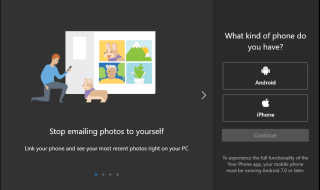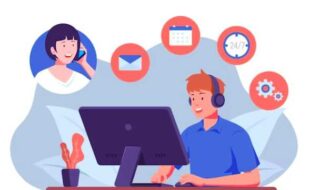Have you ever visited a website and thought, “Why can’t I find information that I need?” or “Why is the website so difficult to navigate and understand?”
Such scenarios are common when a product team overlooks the importance of usability testing.
Besides preventing negative customer thoughts, usability testing shows where customers face issues while using your application, website, or software product.
Regardless of how well-qualified and experienced your design team is, you are not the end customer. For most designers, their design is their baby, and they will never find faults in it as, for them, it’s perfect.
That’s where usability testing comes in and removes any misconception you have regarding your design.
Today, companies looking to leave a positive impression cannot overlook the importance of usability testing.
In this article, we discuss steps to conduct usability testing along with its importance.
How to Conduct Usability Testing & Its Business Benefits
Use these steps to conduct usability testing:
Contents
Plan your usability testing
The first step in understanding how to do usability testing is planning thoroughly for it.
During this stage, ensure you clearly define your goals for conducting the testing. Do you want to collect quantitative or qualitative data? Do you want customers to test the usability and navigation of your website?
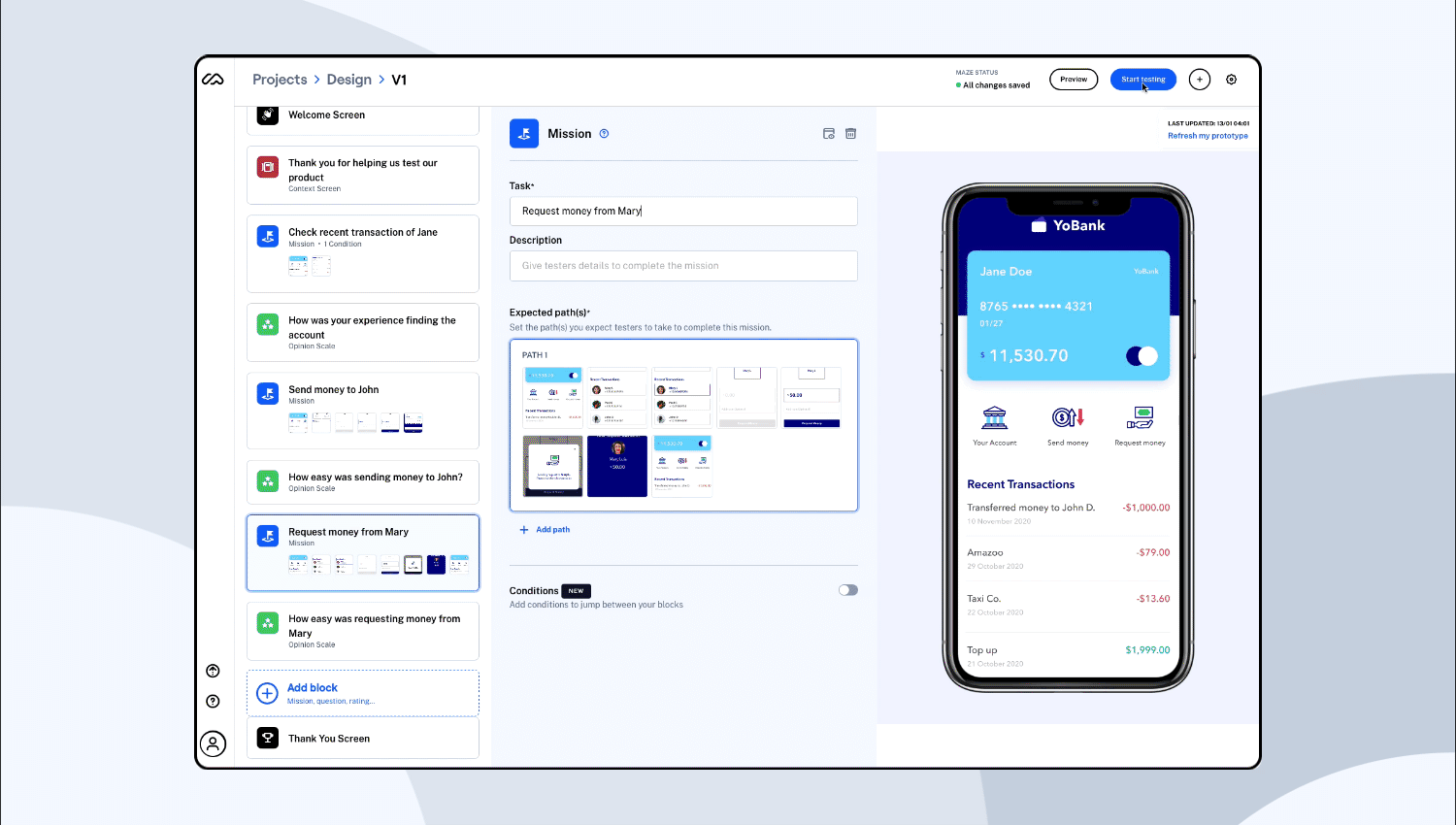
The answer to these questions helps you create a prototype and ensure you build products that resonate with customers.
Your usability testing goal is to find which features are user-friendly or easy to use. Though you have numerous goals, having one or two concise and clear goals will serve your purpose better. Focus on specific questions like what is hindering customers from taking desired actions.
Based on your scope and objective, deciding the format of your usability testing becomes easy.
This allows us to speed up your testing process and be efficient.
With developers spending 49.9% of programming time in debugging, planning for usability testing ensures they spend time developing quality applications and websites.
Create a prototype
A prototype is an early production model with only limited functionality. Usually, designers build a prototype to test a design concept. Conducting usability testing in the initial stages of design helps identify potential roadblocks.
While creating a prototype, ensure it replicates your final product for the testing procedure to have any effect.
Before performing usability testing, focus on the features and functionalities you want to build and test the prototype to ensure a smooth testing procedure.
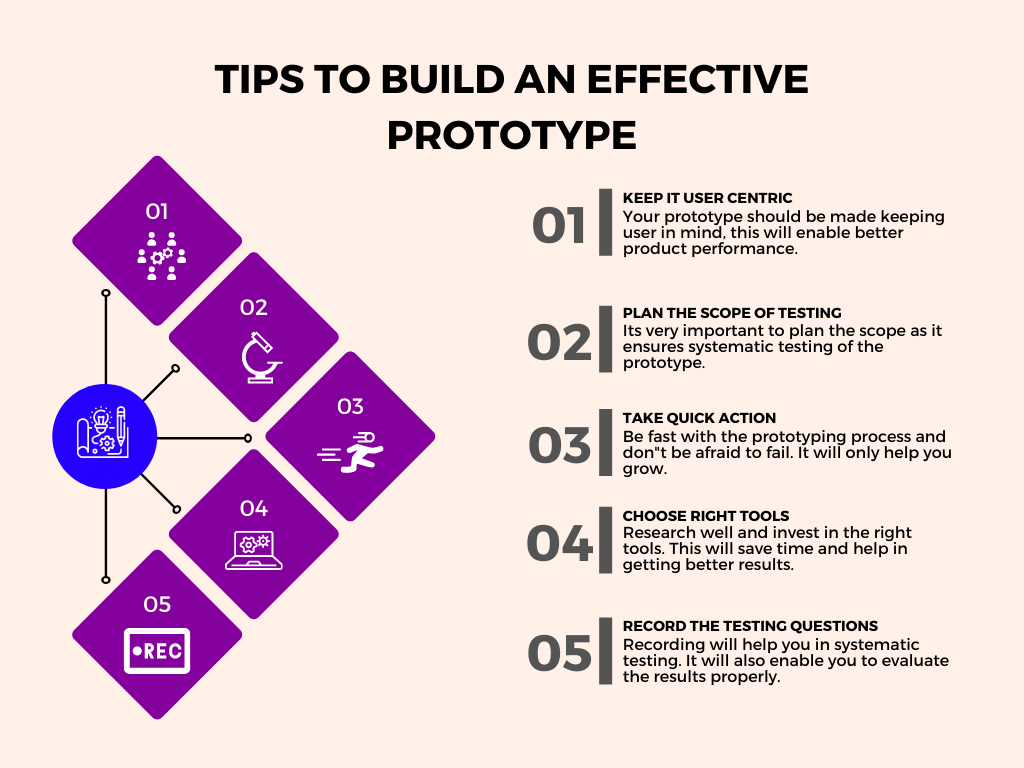
Using multiple ways, you create prototypes, and one such way is using online and offline prototyping tools.
Recruit the right participants
A clear idea about your target audience or ideal customer persona is essential to recruit the right participants.
Often, the lengthiest process in usability testing is recruiting the right participants. This is because not everyone is your target audience. For instance, for an online women’s clothing company, your target audience is women of different age groups.
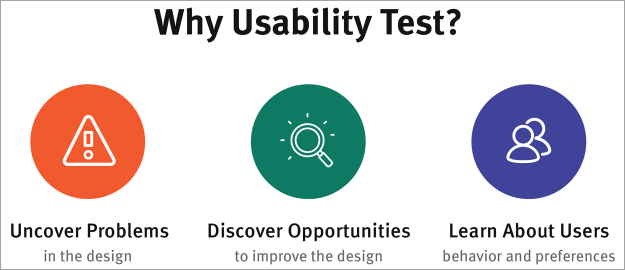
You need to identify your target audience to find the right mix of participants for your testing.
Before hiring any participant, ensure they relate to problems and bottlenecks your company is trying to solve.
To achieve unbiased opinions and testing, ensure you don’t include anyone working on the project as a participant. This ensures participants are not biased or don’t give weightage to certain functionalities.
Choose four to six participants as five users can find 85% of the usability problems.
Choose a format for your usability testing.
Before conducting the usability test, choosing between in-person and remote usability testing is essential.
Types of in-person usability testing
Two types of in-person usability testing are:
- Silent observer method: In this testing, the observer stands behind participants and doesn’t interact with them. They silently stand behind participants and analyze their behavior while testing in their environment.
- Think-out-loud method: This usability testing is uncomfortable and challenging for participants as they describe everything loudly. The participants describe everything they do, providing a clear vision of what’s happening inside their minds.
Types of remote usability testing
Here are two types of remote usability testing:
- Moderated usability testing: The observer and participants interact in this usability testing. It is similar to in-person testing, where observers and participants are simultaneously present online.
- Unmoderated usability testing: In unmoderated testing, participants complete the testing process independently without interaction with anyone. Participants cannot ask questions and seek the involvement of others to complete their testing procedure.
Conduct the test
After determining the format of testing, focus on conducting the test. To ensure a seamless experience, eliminate potential issues, such as poor internet connection or recording issues. For usability testing, choose a noise-free environment that doesn’t distract your participants.
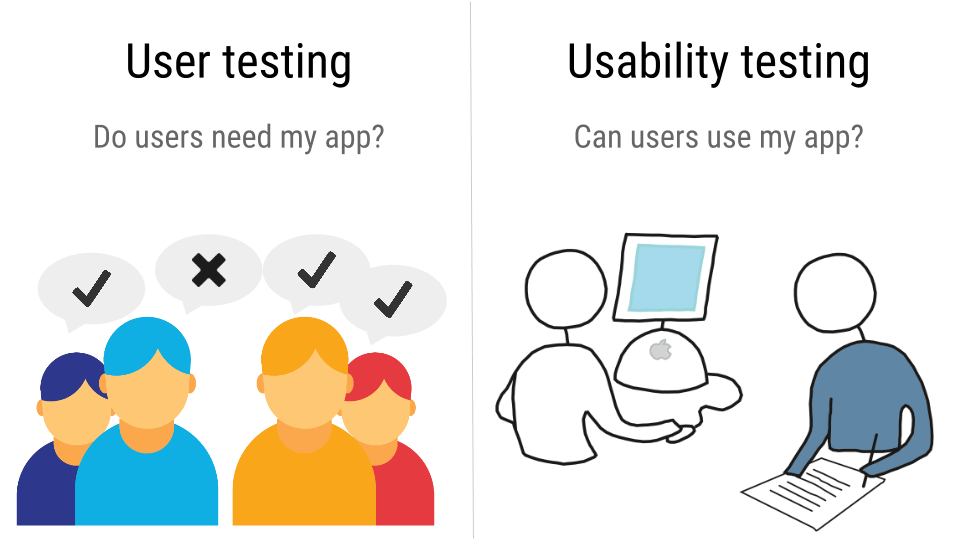
While conducting the test, never try to influence the participant’s decision or opinion. Avoid asking questions that lead a participant to an answer. For instance, avoid asking questions such as “Do you think our application is easy to use?” or “Are the background colors too bright?”
The objective of usability testing is to complete these tasks rather than checking what participants think about the design and color of an application you’re developing. While performing the usability testing, record these tests for future use.
Document the test results
While distilling and summarizing your findings is time-consuming, it’s essential as documentation helps in accurate analysis. Documenting identifies issues that cause trouble to customers.
This makes it easier for a company to identify areas of improvement. Try documenting your findings in the following ways:
- spreadsheet with notes
- audio recording
- feedback and surveys filled out by participants
- screen grabs and video recordings
- success and error rate calculations
Analyze and repeat usability testing
Depending upon your test result, work with designers and product managers to understand and analyze your findings. During your analysis, ensure that you have an open mind because some of your findings might be opposite to what you assumed.
The design might fail if designers get too attached to it. Focus on implementing the changes based on the results and feedback of your usability testing.
Try highlighting issues in your testing and use them as a starting point for your next software or application version.
Conducting usability testing is essential for improving usability and enhancing customer experience.
For this reason, Jeff Bezos invested 100 times more in usability testing and customer experience than in marketing and advertising during their first year at Amazon.
Business benefits of usability testing
Here are some business benefits of usability testing:
Enhances revenue and ensures higher conversion rates
By understanding what customers require and how they behave on your website, a company creates apps and websites that allow them to perform desired actions. This increases the conversion rate, thereby enhancing revenue.
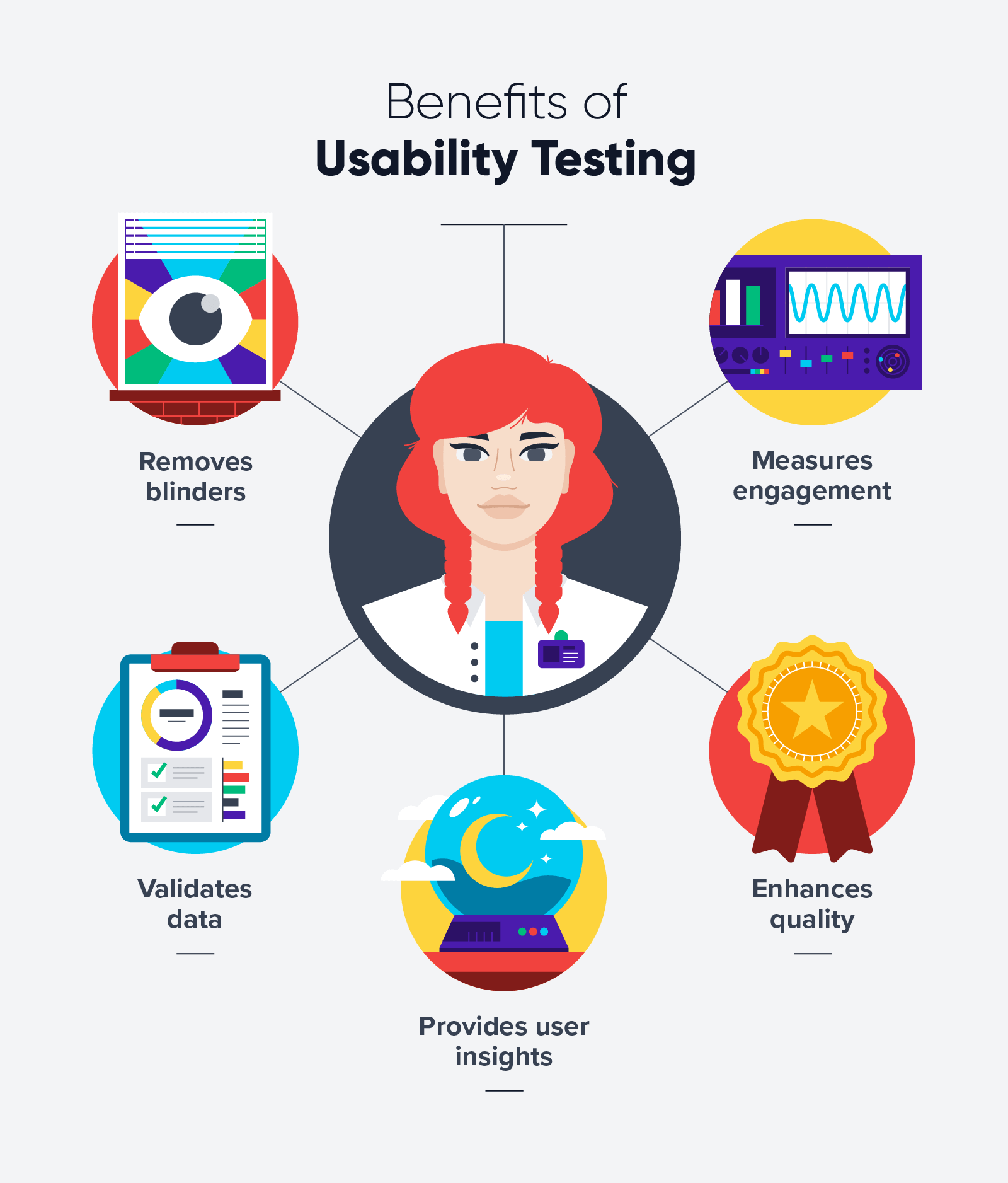
Additionally, when customers have a positive experience using a website, customers are likely to recommend and refer your brand to others.
Customers who don’t find the information they want will likely find it elsewhere.
Saves time and money
As usability testing identifies bugs early in the software development phase, it saves development time and money. When a company skips usability testing, issues might get overlooked, and surface after a product develops.
Fixing issues during or after development is challenging, costly, and time-consuming.
Implementing usability testing early on allows decisions based on facts rather than assumptions. This helps in improving the customer experience.
Reduces product abandonment rate
When customers have difficulty performing different tasks on your website, they might lose potential customers. Typically, 79% of website visitors switch to another website if they have difficulty completing certain tasks.
Attracting lost customers is impossible as many of them might never return, especially if their first unpleasant experience was unpleasant.
With social media just a fingertip away, these customers spread negative reviews or complaints about your brand. Usability testing is an excellent way to reduce product abandonment rates as it provides customers with a delightful experience.
Creates better products
When a company integrates testing on an ongoing basis, it creates products and websites that customers love to navigate through.
The more usability testing you perform, the higher the chances of grasping and understanding how customers think. From removing common errors on your website pages to enhancing design layout, usability testing ensures you create better products.
When a company eliminates ineffective tasks requiring too much customer effort, they win the trust of their target audience.
Key takeaways
Doing any usability testing is better than overlooking its importance.
Though you might follow the above steps, there might be several deviations. While conducting usability testing, don’t pressurize yourself or your team members.
When you conduct usability testing now and then, you might get into the rhythm of testing and learn shortcuts to performing this testing.
Letting another person test your application or website requires courage. When participants give you feedback on your software product, ensure to implement it.
When your website, application, or software helps your target audience, the results are better than you can imagine.
Author’s bio (if needed):
Priya Jain has been copywriting professionally for over eight years. She has attained an engineering degree and an MBA. She teaches math, spends her time running behind her toddler, and tries new recipes while she isn’t writing. You can find her on LinkedIn.


